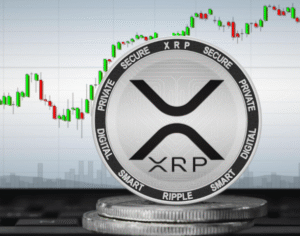$TSLA $BTC $NVDA
#Investing #Stocks #Crypto #ESG #Finance #Markets #Economy #Innovation #Currency #Trading #Tech #Business
Innovation has long been hailed as the driving force behind market growth, yet investors may find themselves caught in a costly trap when expectations outpace reality. Companies that push the boundaries of technology often experience initial surges in stock valuations, but when profits fail to materialize at scale, corrections can be severe. Tesla ($TSLA), for instance, has had an extraordinary run fueled by its pioneering role in electric vehicles, artificial intelligence, and energy solutions. However, recent market fluctuations suggest that investor optimism must be tempered with caution as rising costs and competition from traditional automakers threaten margins. Similarly, chip manufacturers like NVIDIA ($NVDA) face cyclical risks, where overinvestment during times of high demand could lead to supply gluts and price corrections. The same holds true for cryptocurrency innovations, particularly Bitcoin ($BTC), which remains at the mercy of speculation, regulatory hurdles, and network scalability issues. While technological advancement is a cornerstone of modern financial markets, history has shown that speculative excess often leads to painful corrections.
Amid the ongoing challenges in innovation-led investments, enthusiasm for Environmental, Social, and Governance (ESG) funds has started to wane. Initially marketed as ethical and long-term growth-oriented asset classes, ESG funds attracted significant investor capital, particularly in tech and renewable energy sectors. However, data now suggests that many ESG-focused portfolios have underperformed relative to broader market indices, raising concerns about their viability. Institutional investors, once strong proponents of these strategies, are increasingly scrutinizing ESG metrics amid accusations of “greenwashing” and opaque standards. As a result, fund flows into ESG-related assets have slowed, shifting investor focus back toward traditional value and dividend-generating stocks. For instance, energy giants that were previously shunned due to environmental considerations have outperformed in high-inflation and high-demand scenarios, underscoring the fundamental importance of solid financial metrics over thematic investing.
Simultaneously, currency traders are growing increasingly cautious as global exchange markets remain volatile. The U.S. dollar, often a safe-haven asset during periods of economic uncertainty, has seen fluctuations based on Federal Reserve policy signals and global geopolitical developments. Meanwhile, the euro and yen face pressures from economic stagnation and policy divergence, creating opportunities and risks for forex investors. Cryptocurrencies, often positioned as an alternative to traditional currencies, have also seen turbulence, with Bitcoin trading in unpredictable cycles. Institutional adoption has helped stabilize some aspects of the digital asset market, but concerns over regulatory oversight and macroeconomic shifts continue to inject uncertainty. Investors navigating currency markets must carefully analyze central bank policies, inflation trends, and geopolitical risks to mitigate potential losses, as swift market moves can erase gains.
While financial markets digest these broad economic shifts, the art world offers a different perspective on value and longevity. The Courtauld Gallery’s latest exhibition, “Goya to Impressionism,” highlights the evolution of artistic movements that, much like financial trends, have fluctuated in popularity and valuation over time. Just as certain stocks or investment themes go through cycles of enthusiasm and correction, the art market has seen periods of exuberance followed by recalibration. Historically, collectors have turned to fine art as a store of value, much like gold or other tangible assets, during times of market uncertainty. This showcases the timeless principle that while innovation and thematic investments can generate profits, maintaining a diversified portfolio that includes stable and historically resilient assets remains critical in navigating financial markets successfully.










Comments are closed.